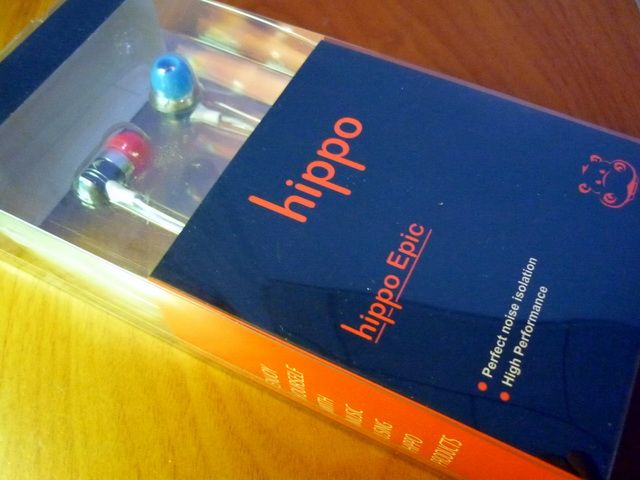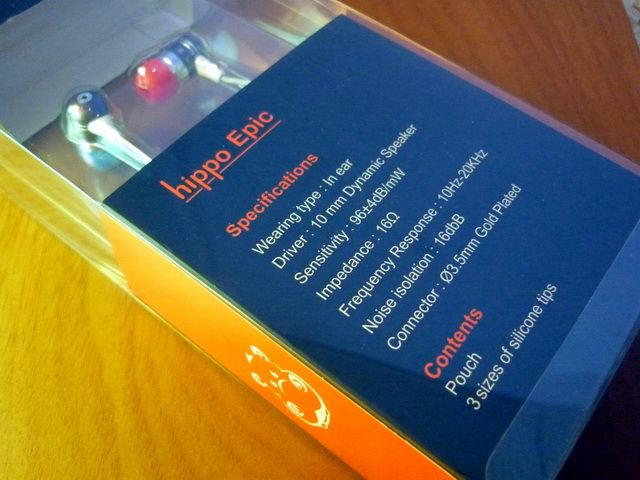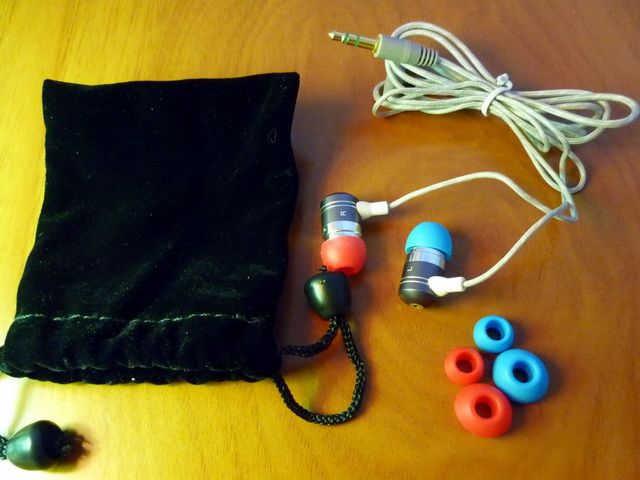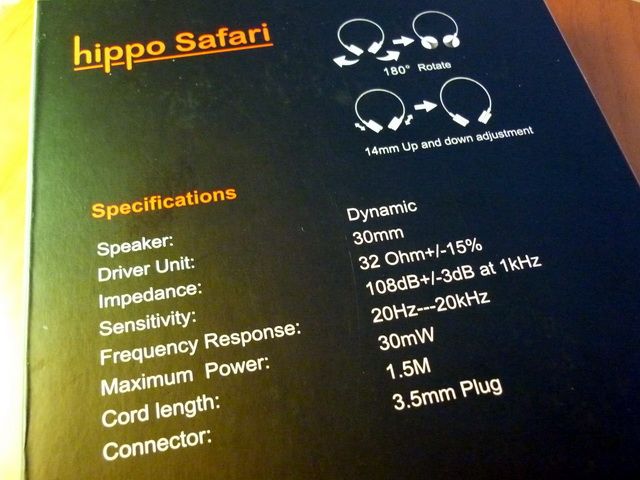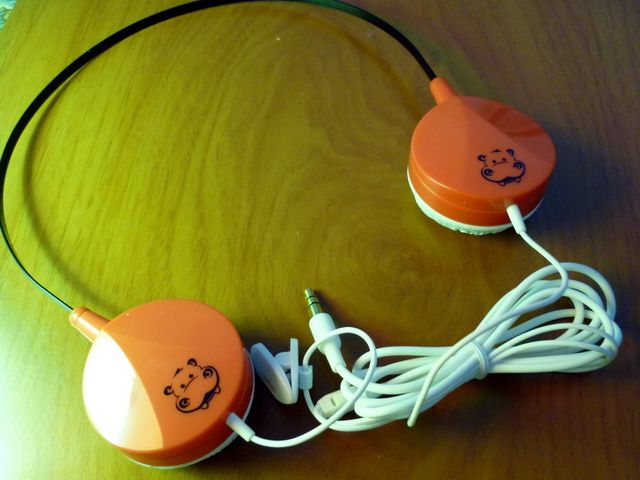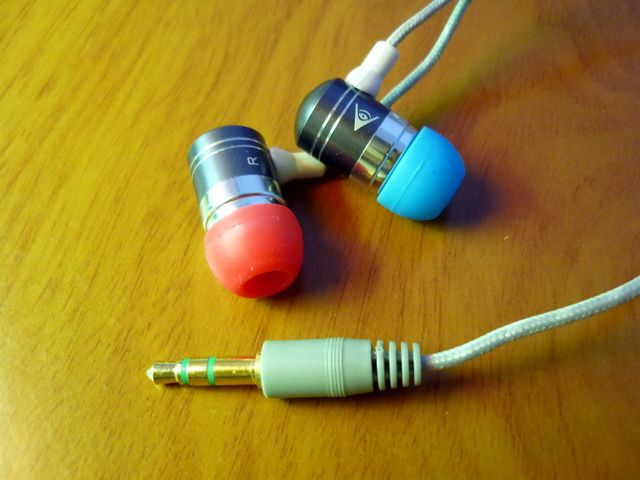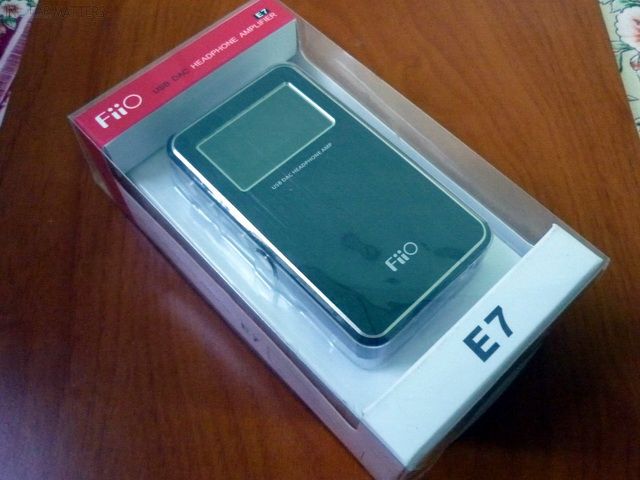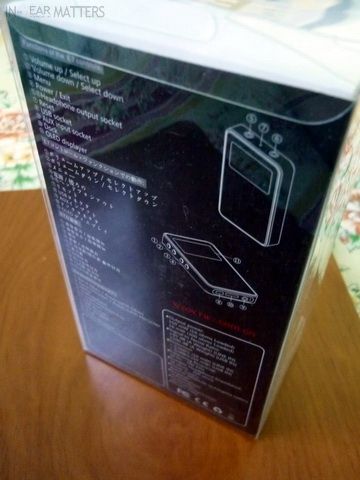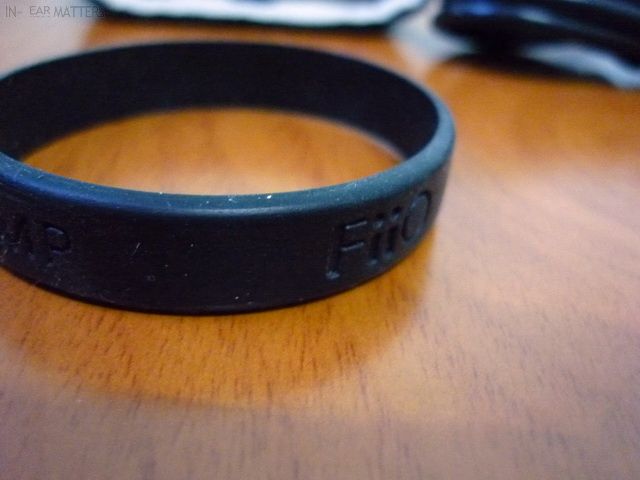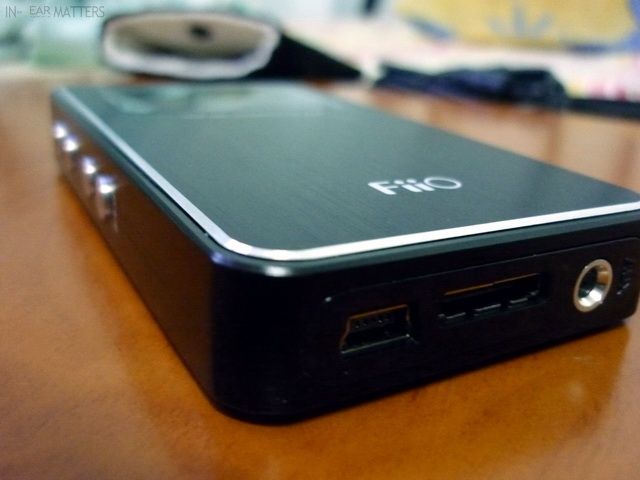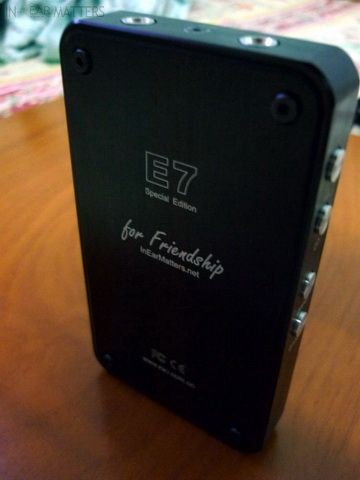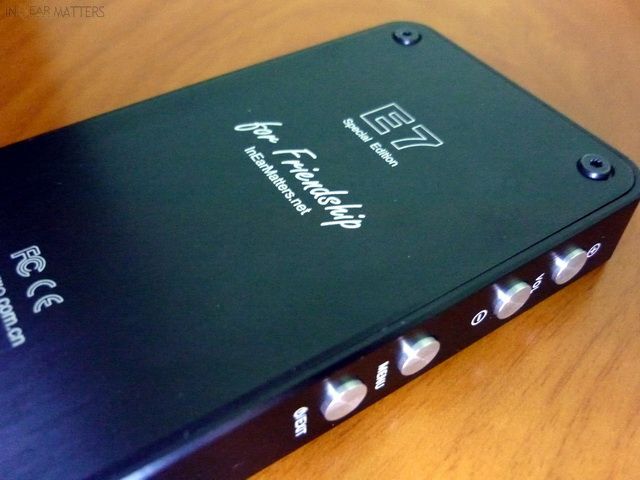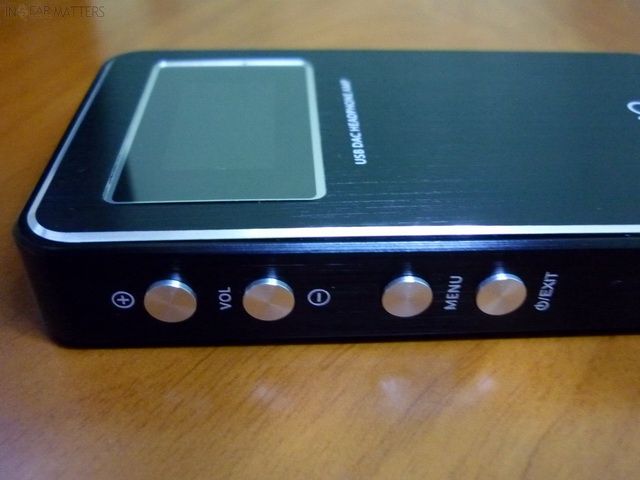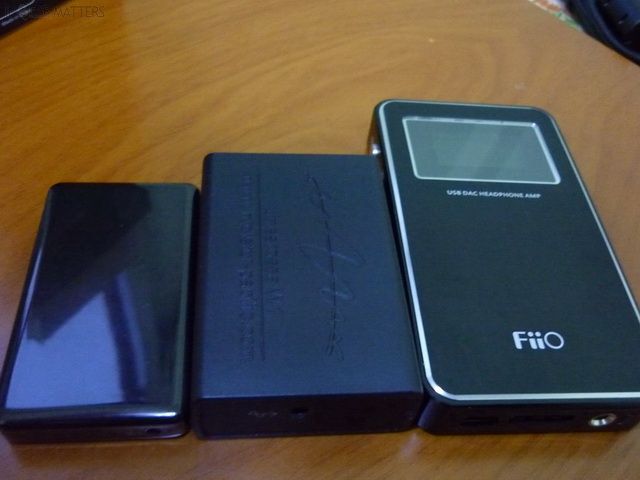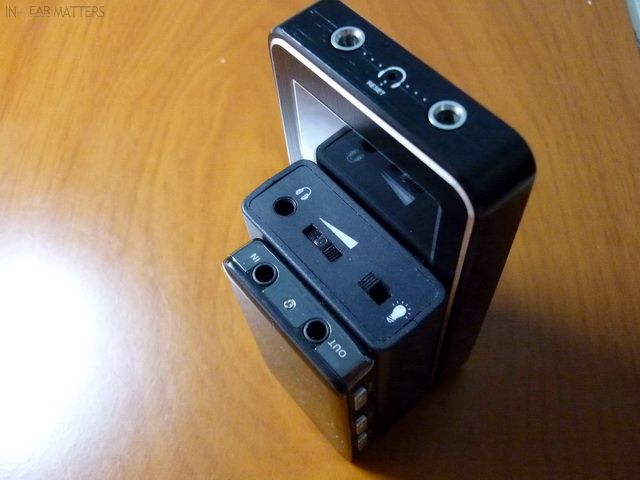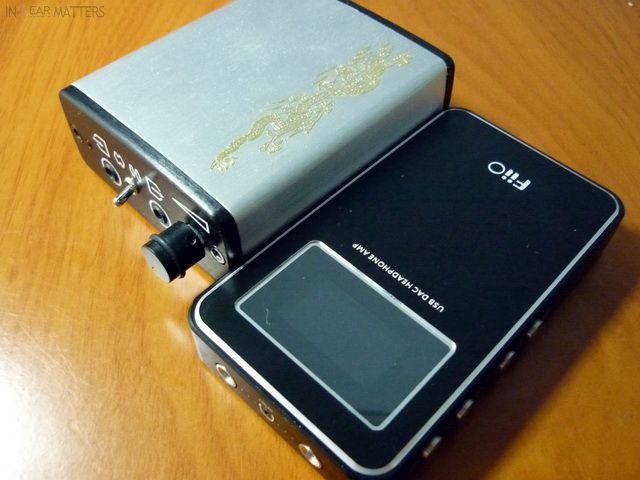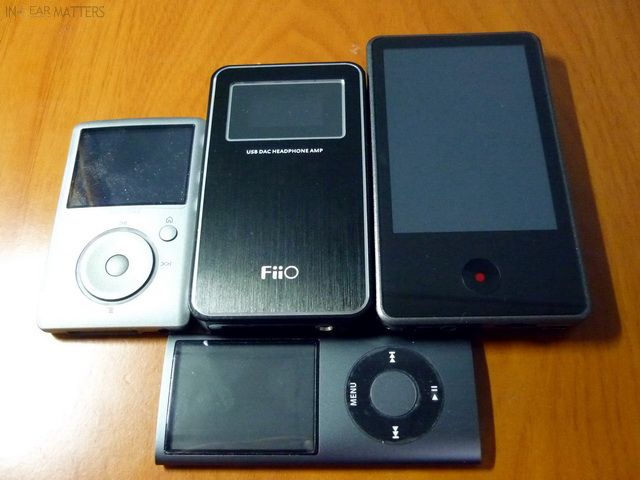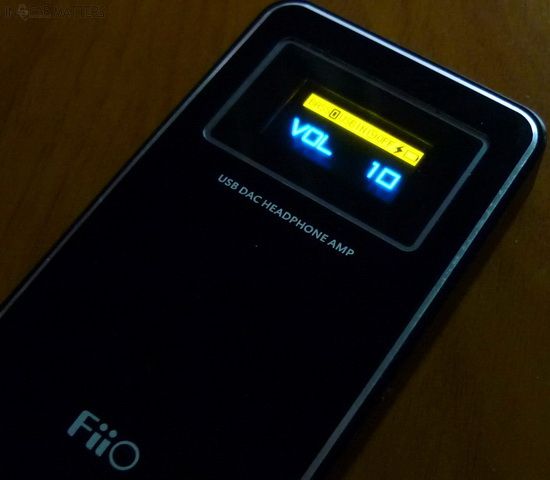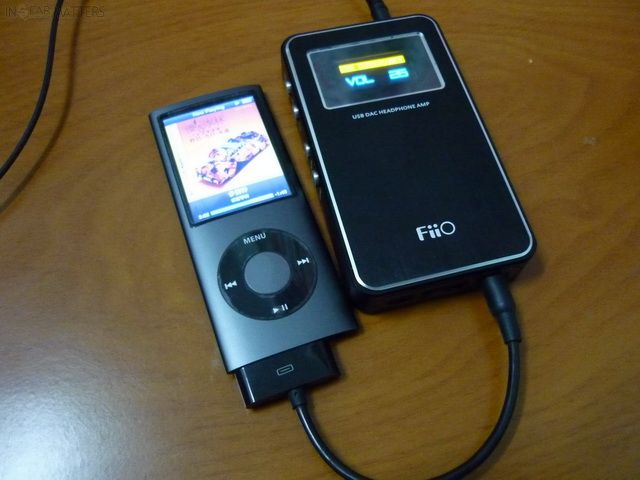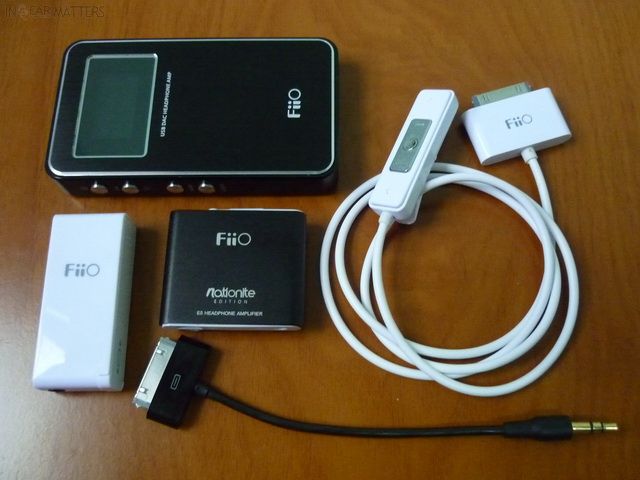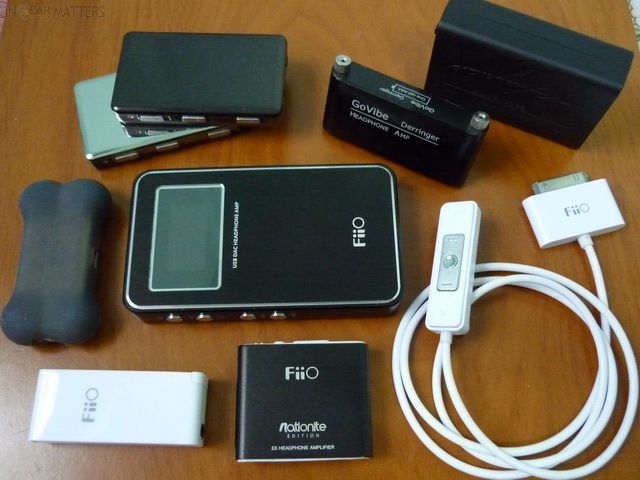First, I want to thank FiiO for the E7 sample, especially since they took the time to make it a one-off special edition.
The full production will look the same, expect for a thicker plastic box.
Spec
Output Power: 150mW (16Ω); 16mW (300Ω)
Headphone Impedance Range: 16 Ω ~ 300 Ω
SNR: ≥95dB (A weighted) on line-in; ≥100dB (A weighted) on USB-in
Distortion: < 0.009% (10mW)on line-in; < 0.008% (10mW) on USB-in
Frequency Range: 10Hz ~ 1000kHz
Power Supply: Internal 1050mAH rechargeable Li-ion battery
Recharging: USB 5V DC 400mA
Size: 96mm x 55mm x 15.5mm
Weight: 100g
The inside: E7, silicone band for wrapping with DAP; a short 3.5mm-to-3.5mm interconnecting cable, about 5 inches end-to-end; a soft pouch; a heavy duty USB cable; a manual (not show).
E7, from the headphone-out's end.
From the USB / dock / AUX-in (line-in)'s end.
Want to thank FiiO again for the special edition. Nothing is different from the standard edition except for the extra printing.
The 4 buttons are very well made aluminum.
Build Quality and Accessories
Build quality is simply great - on par, if not better than, others good portable amp I have (3MOVE, iBassso T4/T3D, etc). The aluminum case is so well finished that it looks seamless on all the joins. While FiiO has always had a decent build quality on their product, E7 is simply another big step forward. The two tones OLED screen is, as expected, stunningly good to look at. It is sharp and bright. All mini jacks have metal sleeve, which also look great.
Size wise, E7 is slimmer than typical portable amp (i.e. Practical Device XM3/4/5) and about half the size and weight of 3MOVE (which is also a portable DAC amp like E7). Obviously it is not the size of an ultra-portable, but given all the features it has, I think making it any smaller will likely to be an unnecessary challenge that FiiO don't need to take on.
Accessories wise, you have the soft pouch for storage, a silicone band in case you want to warp it with a DAP, a heavy duty USB cable which is unusual (most USB cable of this type is really thin) and a manual. If there are anything missing, they will be 4 small stick-on rubber feet. The 4 hex screws protrude a little out from the back plate so they will serve as feet, but they will get scratched if you use them that way. You will be better off getting some stick-on rubber feet yourself if you don't want scratches.
Battery life is estimated to be about 80 hours on a single charge. It will take roughly 200 minutes (close to 3.5hrs) to fully charge an empty battery from USB port.
From left: iBasso T3D, Linearossa W1, and E7.
Meier Audio Corda 3MOVE and E7.
E7 next to Sansa Fuze (left), Nationite s:flo2 (right), and iPod Nano4 (bottom).
Navigation
Navigation is fairly simple and straightforward. One press on the menu button goes into menu selection, and then you just go up and down and find the setting you want to change. In the setting, there are EQ (bass boost), USB charger, Sleep timer (auto off timer), Keylock (auto 'hold' function), Volume limiter, startup volume memory, and system info.
Startup volume memory is for the E7 to retain the last volume setting. If it is not turned on, E7 will reset its volume to 10/60 during next startup. I was told the firmware is upgradeable only via a special cable. My assumption is FiiO uses the dock to update firmware so basically it means at this point it is not user upgradeable. In any case, beside some small typo in the menu, the firmware seems to run very smoothly and there really isn't any real reason to update the firmware. Hopefully by the time E7 is finally released, the typo should be corrected. The keylock, or auto hold, can be set between 20 and 60 seconds, which is a bit too long in my opinion. I would like the minimum to be 10s. Once the keylock is engaged, you will need to press the menu button for a few second to unlock. When it is locked, the screen will be turned off as well. If you don't set the key lock, the screen will remain on all the time.
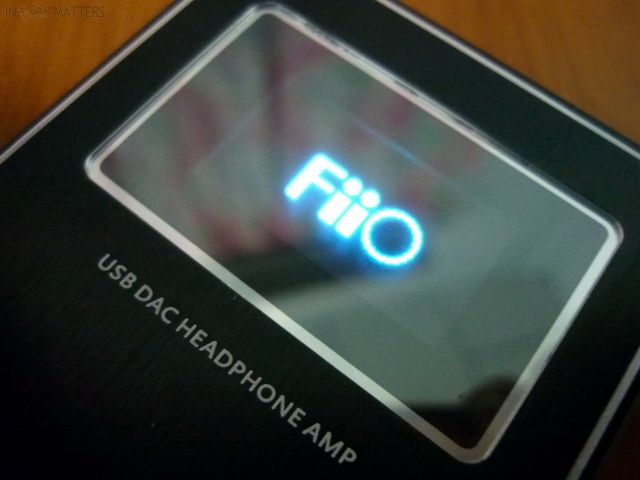
Startup screen. Sorry for the blurry picture as my camera was a hard time focusing on the bright OLED screen.
E7, connected to Nano4's line-out via a FiiO LOD.
SQ
First, let's talk about the line-in and headphone-out. While on early on FiiO has decide to keep the same chip set as E5 on the E7, the decision has been made in the last minute to switch from the original OPA2338UA to the better performing AD8692 by ADI. I was also told that all the coupling caps are Elna Purecap for audio instead of the less desirable tantalum caps.
When fed by iPod nano4 line-out, in comparison, E7 (no bass boost) is more neutral sounding than E5, just a tad colder than E1. E7 has a softer bass impact, but a better treble performance. It actually feel a little thin and grainy compared to the warmer, more musical sound signature of original E5 amp section because of the extra fine detail E7 has. It also has a better depth in soundstage but not particularly wide. Once switch to Bass Boost Lv1 however, E7 starts to sound warmer and acquire a better width in soundstage, while still retaining most of its crispy detail. This works fairly well with analytical IEM like RE0, while BB Lv0 sounds better with warm sounding IEM like Sherwood SE-777. Overall, I will say E7 is definitely better sounding than E5 (more) and E1 (less). In fact, I will say E7 amp section performance is getting very close to that of iBasso T4 and Linearossa W1.
Now, how about the DAC? E7 use PCM2706 as its USB receiver, but the actually decoding is done by Wolfson WM8740, which is pretty well known for having a good sound. I don't have any other DAC amp of E7 price range to compare it with (well, there is only one other DAC amp in this price range anyway), and compare it to the more expensive 3MOVE is pretty unfair since 3MOVE do have a really good amp section. But my unscientific listening does suggest to me that the DAC section is really well, better than the PCM270x-only solution used by 3MOVE or Go-Vibe USB DAC. I would have love to listen to the line-out but FiiO has decided they won't have a dedicated 3.5mm output for line-out. Instead, they prefer a dock solution (which hopefully we will see a separate cradle for it). I think it goes without saying that E7 sound much better when fed by the DAC than by Nano4.
EQ
I think the bass boost function deserves some further explanation. On Lv0, bass boost is off and the general sound signature is on the cold, analytical side. On Lv3, it is very warm, with the treble slightly roll off. In fact, it is a bit like the bass boost on E5 (signature wise), but E7 does it in a more gentle way. The actual bass boost on Lv3 isn't massive, but it does give a much warmer and fuller bottom. Lv1 and Lv2 fill in the gap between the two, with Lv1 as the warmer Lv0 and Lv2 as the more analytical Lv3. I think the whole bass boost function works more like a general EQ giving different sound signature, which I prefer over just a simple bass boost.
The FiiO family: E1, E3, E5, E7, and FiiO L1
FiiO amp with Travagan's Colors, iBasso, T3D/T4, Go-Vibe Derringer, and Linearossa W1.
Conclusion
It has been a long road of making and waiting, but finally E7 has come to live. It is almost every bit it was set out to be and FiiO has done a great job to achieve its goal of making a budget portable DAC amp with a fantastic value. I think It will be the new standard of the industry, to say the least, when it comes to measuring price/performance ratio of any portable DAC amp. The estimated price is around US$80.
The only question left is: when will TI deliver those overdue chips to FiiO so the full production can begin?
P/S: A small note about line-out: You might have noticed on the early spec that a 3.5mm line-out jack was planned, yet it is not seen on the amp itself. the line-out has been moved to the dock connector. I asked James @ FiiO and their concern is that people connecting their headphone to the line-out to "try it out" which could possibly damage their headphone and even worst, their hearing. They have many non-audiophiles customers so the decision is made not to risk any chance. There could be a cradle (with line-out jack) released later if enough interest has been shown, or else the line-out will be left to the upcoming E9.
Small update: After roughly 100 hours of burn-in, I give E7 another listening against T4 and W1 using RE252. I can't say in 100% certainty but it does feel the soundstage is opened up by a tiny bit. Still not quite as good as T4 or W1 but it is better than before as background detail is easier to notice in comparison. The overall presentation seems less grainy and edgy than before. On previous listening, I preferred T4 just a little bit over E7, but now I think the line is really blurring.
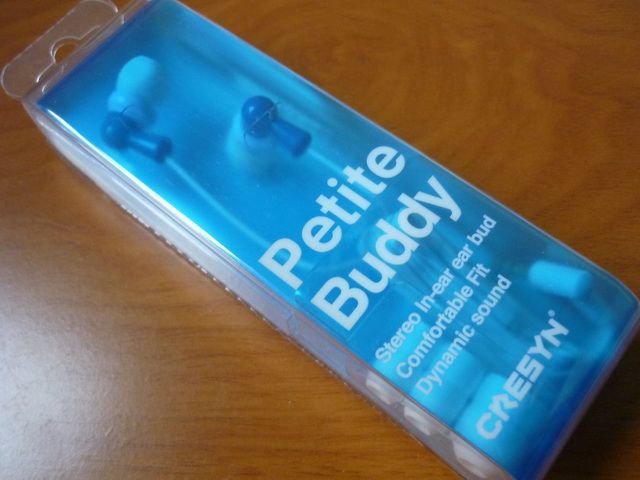

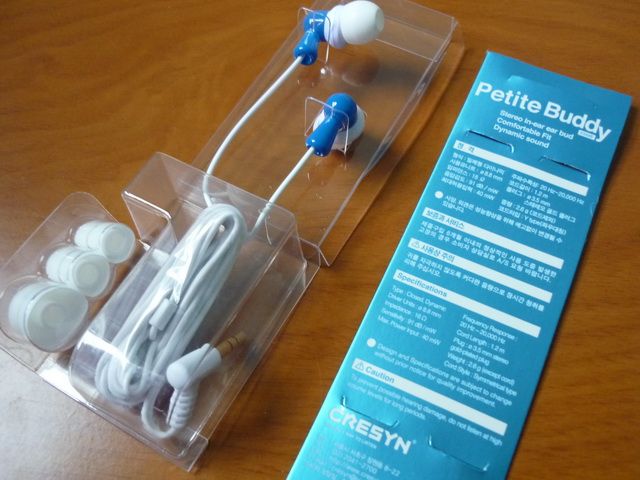
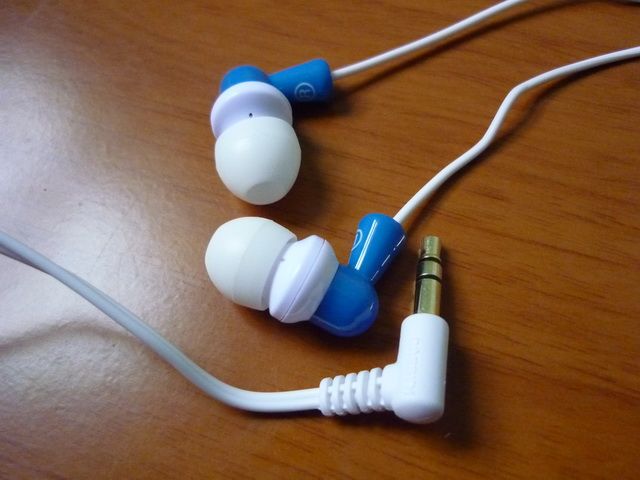
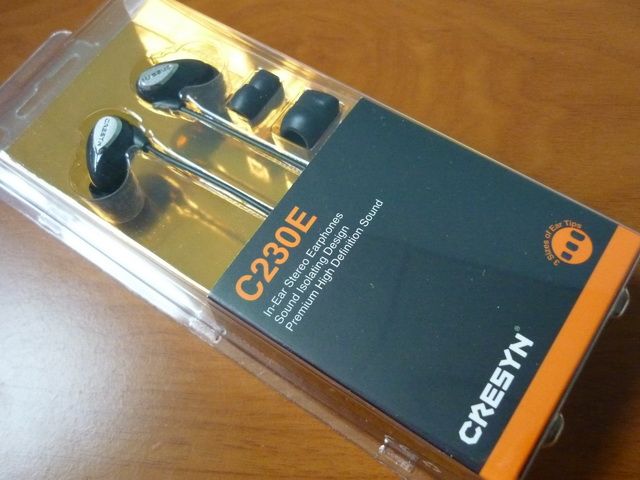
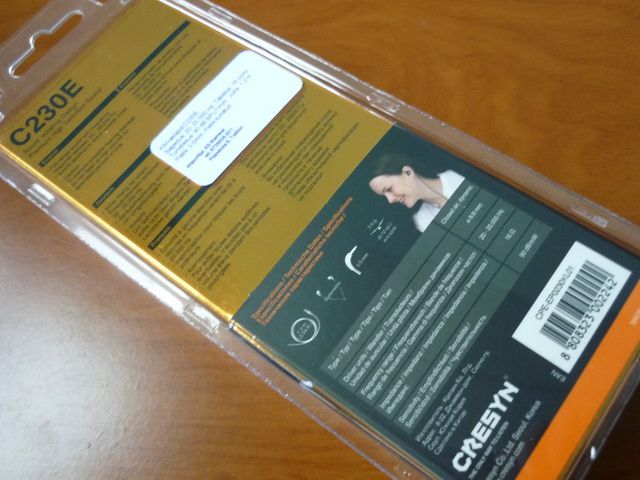
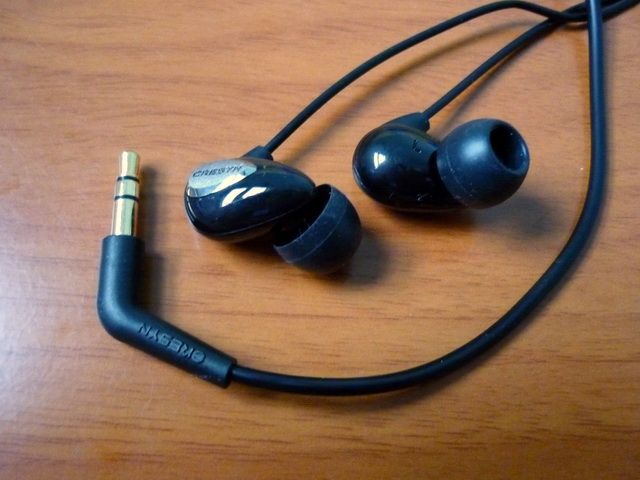

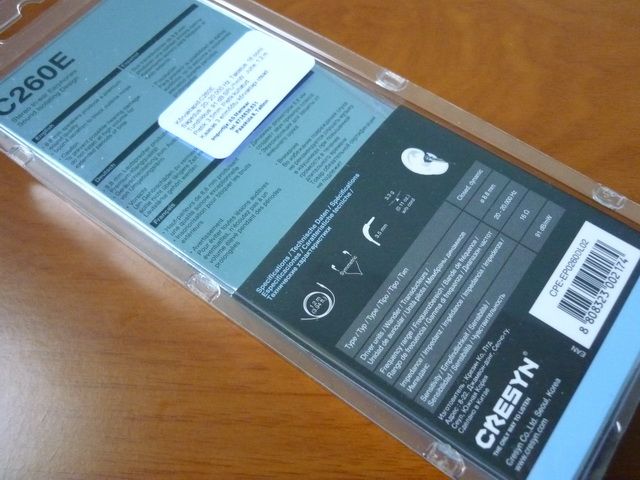
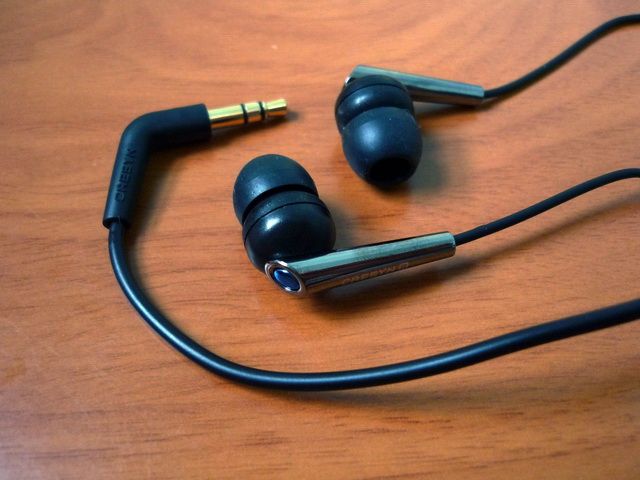
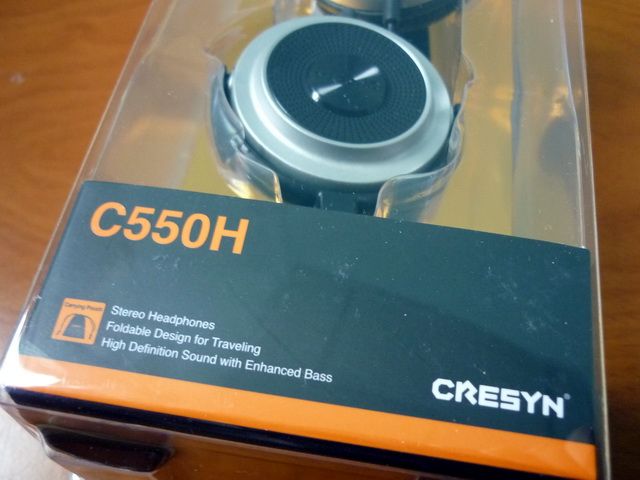
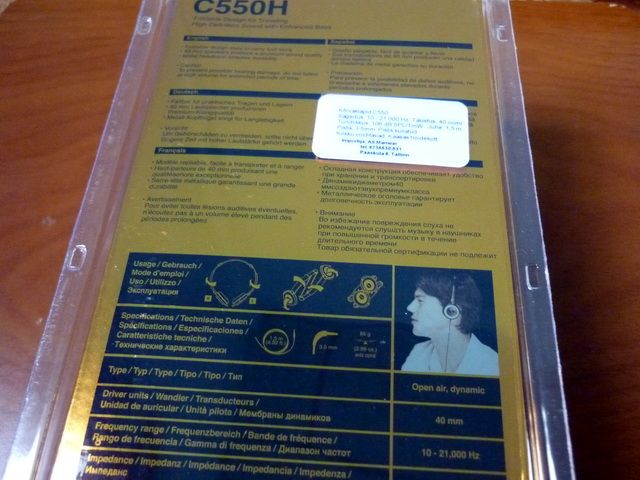
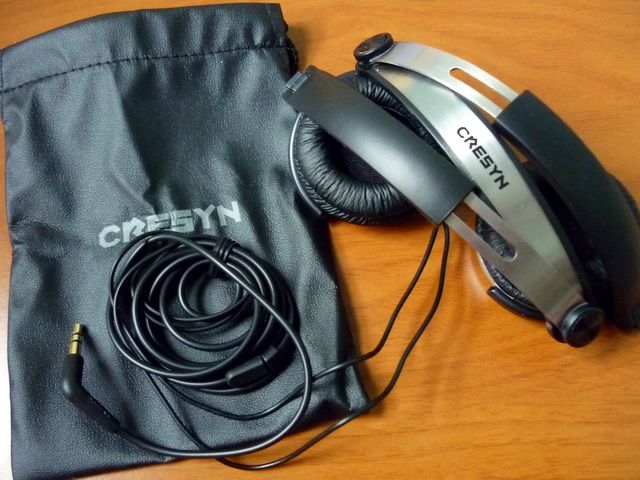

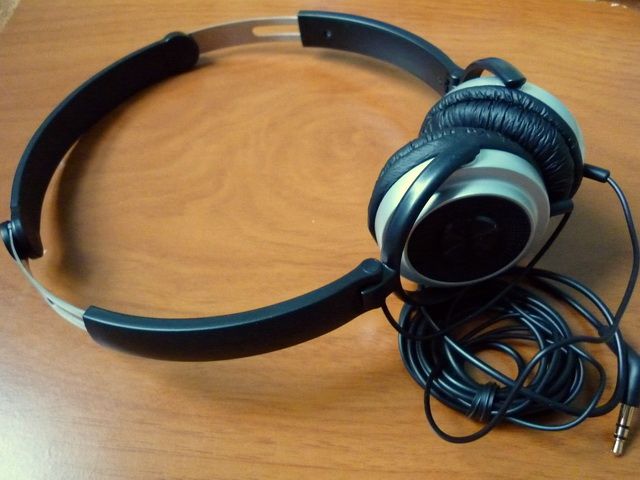
 This rating is for Cresyn C222E only and may change without notice. Please refer to the list for a complete listing.
This rating is for Cresyn C222E only and may change without notice. Please refer to the list for a complete listing. 



